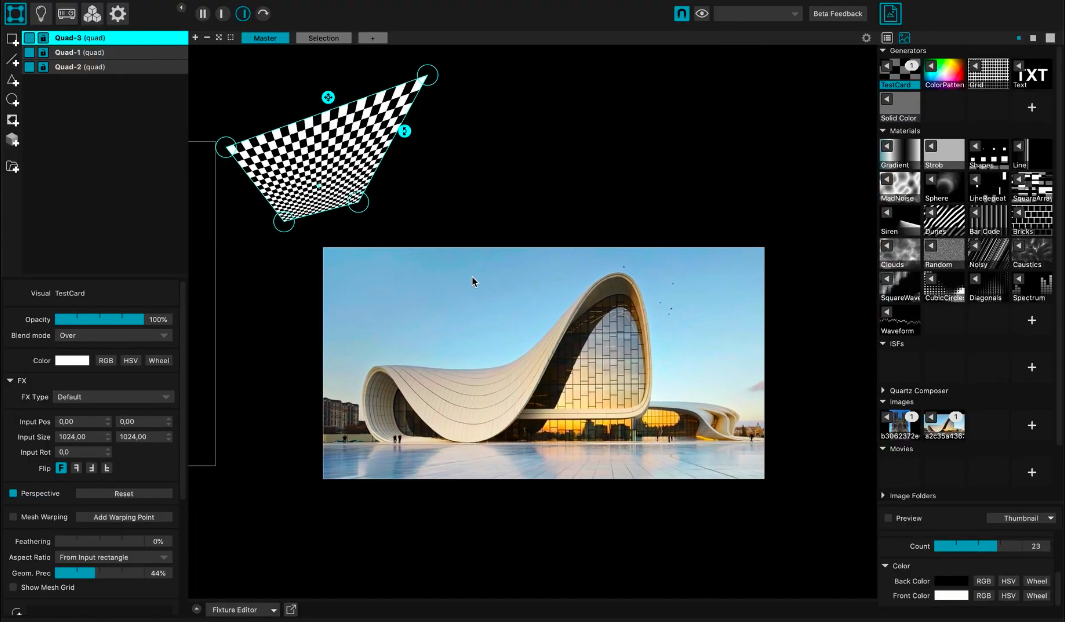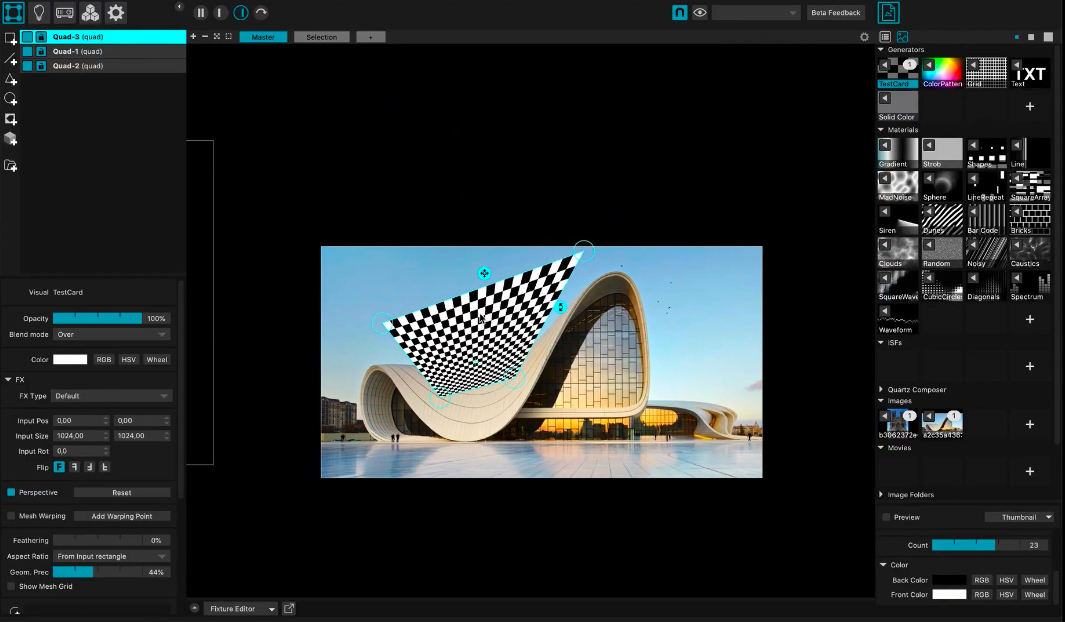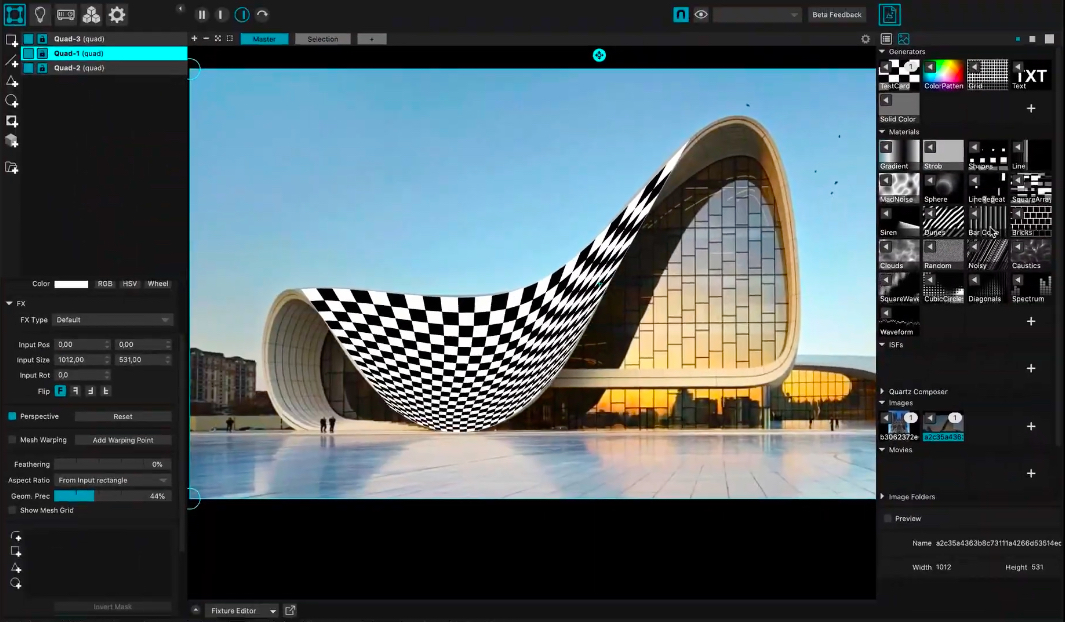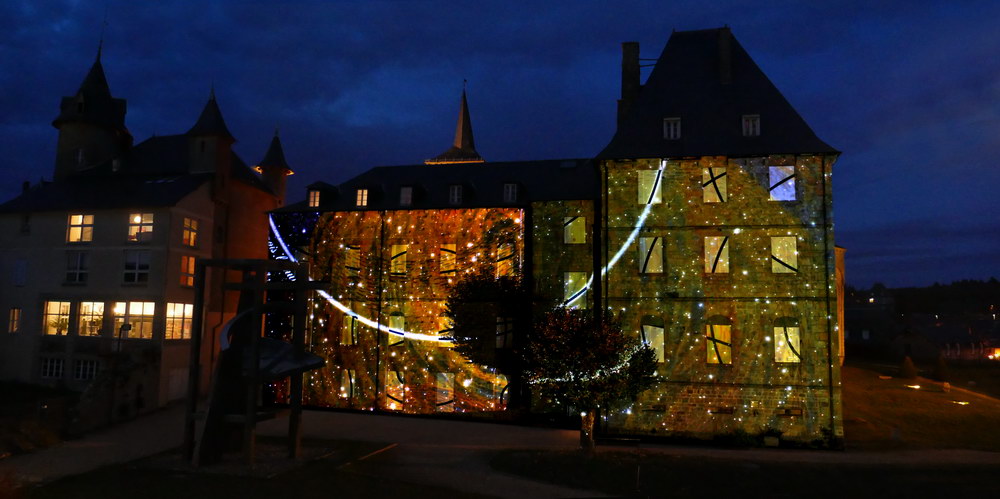- What is video mapping?
- Video mapping : what is it not?
- Words and dates
- Video mapping : when did it start and where ?
- What are the circumstances in which video mapping appears? Part.1
- What are the circumstances in which video mapping appears? Part.2
- The prehistory of video mapping
- Vjing
- Large-scale projection
- Large-scale projection around the year 2000
- Contemporary arts: the advent of the projector
- Site-specific arts: times and places
- Hans-Walter Müller: Volux and Topoprojections
- 2003: 3minutes² by Electronic Shadow
- The history of video mapping computer tools
- The history of video mapping computer tools. Part.2
- A history of institutionalisation…
- Yet another art form?
- Video mapping: a narrative
- Notes on artists
Video mapping: What is video mapping?
Video mapping — or projection mapping — is a practice that consists in projecting animated images onto uneven surfaces and 3D objects found in our real environment.
Video mapping in the strictest sense
In the strictest sense, video mapping is technology which combines that of three-dimensional computer graphics, enabling an image to be adapted to the depths of the surface onto which it is to be projected, and that of video projection — it needs a video projector, the power of which depends on the dimensions of the object to illuminate.
The term mapping refers to texture mapping, i.e. the techniques of applying textures to objects modelled in three dimensions, in a computer-generated image. These ‘textures’ might be compared to infinitely flexible and extensible virtual wallpapers, able to cover any 3D shape to determine its external appearance: colour, pattern, roughness, etc.
Illustrations:



The Madmapper 4 software (2020)
But in video mapping, this wallpaper, animated (since it is a video), covers tangible objects, in the real world, using adapted video projectors. In any case, the term ‘video mapping’ should only be used for shows or performances of video projections involving the 3D modelling of the support medium and the tailoring of projected images to its shape through a computerised system. The development of ‘texture placing’ techniques in 3D computer graphics, in the mid-1970s, and protocols such as those which Walt Disney and the General Electric Company patented, in 1991 and 1994, respectively, are what makes video mapping in this sense possible. Use of this technology, in the fields of art, culture, entertainment and advertising, develops significantly in 2005-2008.
Video mapping in the vernacular sense
Video mapping is often associated with illusionary projections onto architectural façades, used for open-air concerts, public festivals or commemorations. Similar to son et lumière [Ndlt: sound and light], this type of spectacle became widespread during the 1970s and 80s, thanks to large-scale image projectors (PANI), which work with slides on glass or transparent media and may slide or scroll… It therefore neither presupposed either digital technologies or even video projection — nor does it presuppose them today, although it relies on them to a considerable extent. This common acceptance of video mapping can be explained simply because of the visibility and success these monumental projection spectacles have enjoyed with a varied and cross-generational audience.

Calendrier de l’avent [advent calendar], Agence Patrick Rimoux. Monumental projection, Abbaye St André (Contemporary Art Centre in Meymac, 2018)
If the vernacular definition of video mapping is a little misleading, this is because it is possible to cover a variety of volumes (and not only façades), which may be smaller and/or of lower symbolic value than a historical or religious monument, with animated images. Yet, it would also be unwise to use an excessively technological definition, as this would also be too restrictive. Even for professionals, video mapping is not a clearly demarcated technical/artistic segment. At the intersection of several disciplines and sectors of application (contemporary art, spectacle, music, communication, cultural mediation, heritage, etc.), it brings together artists, engineers and technicians born between the 1950s and the year 2000, with differing areas of expertise but also highly eclectic imaginations — from the most cutting-edge to the most popular, from the most technophile to the most traditional. In fact, the term video mapping refers to audiovisual offerings that are diverse and, for many, hybrids, whether from a technical, artistic or economic perspective.
Read more: video mapping, what is it not?
